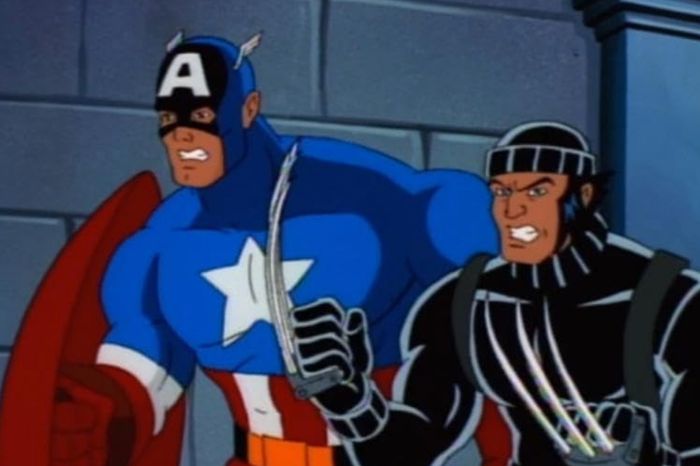
When the familiar strains of 1992’s X-Men: The Animated Series’ opening theme music began to play in the trailer for its sequel series, X-Men ’97, it was like a siren song for elder millennials. That tune has come to represent the innocence and excitement of the ’90s Saturday-morning cartoon experience, and the show is often remembered as one of the pillars of the famed Fox Kids programming block. And luckily enough, the haze of nostalgia did not distort our memories. A lot of it is actually quite good!
So, to both celebrate the series and give a bit of a primer on the stories it told before X-Men ’97 premieres on March 20, we’re revisiting 15 of its best episodes. At its height, X-Men: The Animated Series could combine superhero action with long-running serialized storytelling and dramatic pathos in a way that reignited its audience’s interest in the titular mutant team and introduced a generation to their plight and battles. These episodes show off why, in the minds of many that grew up on them, it’s still the adaptation of X-Men that all others have yet to beat.
Season 1, Episodes 1 & 2: “Night of the Sentinels Parts I & II”
The “Night of the Sentinels” two-parter accomplishes with ease what other superhero series have struggled to do: How do you introduce an entire team of fantastical characters, establish the intricate world they live in, set up their various issues and dynamics, and send them on their adventurous way all in a few short episodes? By using the young mutant Jubilee as a sort of audience surrogate, so that her confusion and subsequent learning experience mirrors that of the viewer. You never get bogged down in exposition, because it feels like part of the plot rather than just a bunch of information being dumped on the viewer.
Aside from this expert introduction, “Night of the Sentinels” is a fun watch that sets up the high stakes of the series immediately. The first real mission that the X-Men go on is a disaster, with Morph dying, Beast getting locked up, and Wolverine at odds with Cyclops due to his perceived lack of leadership skills. Rather than tidy things up in a neat package, it shows a lot of faith in its intended young audience that they’ll just kinda figure things out.
Season 1, Episode 4: “Deadly Reunions”
It doesn’t take very long for the show to introduce Magneto, the X-Men’s primary antagonist (or misunderstood protagonist, depending on which thinkpiece you’re reading. He makes some pretty good points!). And when it does, it’s with a bang. Magneto is a vengeful, complex conqueror, and it doesn’t take long to understand why he’s one of the few X-Men villains to have truly pierced into the mainstream. The episode also ends with a powerful scene of Professor Xavier beating Magneto, not through sheer force (Magneto trounced any X-Men that came at him) but by forcing him to telepathically relive the brutal death of his parents. That’s cold, X.
Season 1, Episode 7: “Slave Island”
As targeted outcasts, the X-Men have been the subject of a wide variety of metaphors, some of which are a little misguided. They’re more analogous to broader communities that often feel threatened by would-be fascists and fearmongers that use them as scapegoats for society’s ills. “Slave Island” presents a less fantastical, sobering view of the outcome of totalitarianism on these populations: Mutants are rounded up and used as slave labor.
This is an X-Men cartoon, of course, so they do manage to enact an uprising and help the enslaved Mutants escape, destroying all the big robotic Sentinels that have been acting as prison guards on the way out. However, even without all of the flashy colors and lasers, it’s still a grim message and an excellent part of season one’s overall plot thread of leaders trying to subjugate mutants for their own warped purposes.
Season 1, Episodes 11 & 12: “Days of Future Past Parts I & II”
X-Men: The Animated Series liberally picked from comic-book plots in order to fill out its story lines, and toward the end of season one, the creative team chose perhaps the most famous one: “Days of Future Past.” The mutant Bishop is sent back in time to stop a member of the X-Men from assassinating the bigoted zealot Senator Kelly. It turns out, though, that it was all a frame job to begin with. Mystique was pretending to be an X-Man in order to lay the blame on them and bring about the annihilation of all mutants. This two-part episode changes some of the details from the original comics, but it’s still an exciting adventure and a more-than-proper introduction for kids who hadn’t yet cracked open the source material.
Season 2, Episodes 14 & 15: “Till Death Do Us Part Parts I & II”
Much to Wolverine’s chagrin, Scott Summers and Jean Grey get married in the opening of season two. But it’s far from a peaceful matrimony — while Wolverine gets his anger out by beating up Cyclops-esque robots in the Danger Room, Scott and Jean are abducted by Mister Sinister. Sinister lacks the destructive grandeur of a villain like Apocalypse or Magneto. Instead, he’s a perverse weirdo who is really good at betrayal and wants to extract everyone’s DNA. He gets stopped when the X-Men manage to regroup, but he provides a good look into the series’ aims going forward, which put less focus on social commentary and more on the inner workings of the mutant world.
Season 2, Episode 18: “Repo Man”
Some of the best installments of X-Men come from Wolverine’s intricate backstory, to the extent that it’s a little baffling how a film like X-Men Origins: Wolverine managed to whiff it so hard. Diving into his past is a natural way to bring in a score of new characters, and that’s what “Repo Man” does, tackling the introduction of Wolverine’s prior team, Alpha Flight. They’re a Canadian mutant group — sort of like Wolverine’s hometown team before he left and got drafted to the big X-leagues. And though they’re initially set to bring him down, they end up rejoining him and helping him escape the clutches of the bad guys who want to rip Wolverine’s skeleton out of his body. Ya know, for study. Not because they’re awful or anything.
Season 2, Episodes 20 & 21: “Time Fugitives Parts I & II”
X-Men: The Animated Series loved time-travel plots. If our team had to go back to the past to save the future, consider it greenlit. In “Time Fugitives,” mutants and fellow admirers of giant laser guns Cable and Bishop find themselves at odds. Cable needs to stop Bishop from disrupting his timeline, one that Bishop is disrupting himself because he’s trying to save his own. Meanwhile, the X-Men are caught in the middle, doing their best to not end up dead (which they originally do, in the timeline that Bishop wants to save.) Throw in a plague developed by Apocalypse that aims to ignite an anti-mutant agenda and you have one of the best action-oriented installments of the entire show and one that makes great use of what could be an oversaturated plot device.
Season 2, Episode 22: “A Rogue’s Tale”
Along with throwing constant new mutants at us, season two was dedicated to backstories, with Wolverine, Gambit, Storm, and Rogue all getting episodes that dive into who they were before they joined Team X. The shift in focus was helped by a seasonwide B-plot of Professor X and Magneto trying to survive the dinosaur-infested Savage Land far away from the main action. So with its few extraneous details, “A Rogue’s Tale” might be the most emotionally effective of them all as we learn about Rogue and her foster mother, Mystique.
Mystique is one of the most complicated X-Men foes. Her mutant ability allows her to turn into anyone, meaning that she’s rarely granted a real identity herself. Whether she uses this as a launching pad for empowerment or the impetus for the manipulation of others depends on the episode or issue, but in “A Rogue’s Tale,” her attempts at maternity are warped into fearsome control. Rogue, who can steal any mutant’s powers and who was abused by her biological father, becomes Mystique’s victim. So Rogue’s eventual confrontation with Mystique isn’t just about her betrayal but her attempt to mold Rogue’s identity and use it against her. Their dynamic provides a haunting example of how parenthood can descend into a selfish power play and how horrific cycles are passed on.
Season 3, Episode 35: “Obsession”
X-Men: The Animated Series had a convoluted relationship with serialized storytelling. The first season connects pretty fluidly, but a network decree forced the creators to scale back on that kind of intense continuity and instead save it for B-plots and multipart episodes. However, one of the best examples of its ability to build up narratives came in the form of Archangel, a character who was betrayed by Mystique and enslaved by Apocalypse in the first season who now dreams of revenge on the mutant baddie. Also notable is the lack of a happy ending — Archangel’s bloodlust ends up putting the X-Men in danger, and he concludes the episode even angrier than he began. It proves that for some, redemption isn’t possible. At least not yet.
Season 3, Episode 37: “Cold Comfort”
In a world where the government is out to get them, Magneto is out to recruit them, the X-Men are putting out fires, and the public opinion on mutants is generally chaotic, can one mutant live a normal life? “Cold Comfort” tries to answer that by showing us Bobby “Iceman” Drake, an early X-Men member who abandoned the team because he just wasn’t feelin’ it after his girlfriend, Polaris, became injured. Is he successful at staying out of trouble? Ehhh.
The X-Men and Iceman end up in conflict with government team the X-Factor, and while it seems like they’re en route to a triumphant ending, Polaris reveals that she’s fallen in love with a member of X-Factor and leaves him. Jaded by both the X-Men and his ex-woman, Iceman refuses to rejoin his old team and leaves. As it turns out, in the world of the X-Men, drama is going to find you wherever you go.
Season 3, Episodes 40, 41, 42, & 43: “The Dark Phoenix Parts I-IV”
The Dark Phoenix saga, a classic comic-book story that has confounded the creators of two different X-Men films. (Both The Last Stand and Dark Phoenix crashed upon the rocks in trying to properly adapt it.) However, it thrives in the animated series, coming after a similarly effective Phoenix saga and giving Jean Grey the story line that she’s always deserved. Grey, as the doting partner to Cyclops and a voice of reason among the X-Men, typically plays the straight man amid the more explosive personalities.
As the Dark Phoenix, her mutant powers that are often seen as a source of stability for the X-Men become nightmarish. She defeats the X-Men with ease, and as such, they’re sent on a desperate run to find a way to rid Jean of the Phoenix Force without killing her. It’s a mission that will come to involve factions from across the galaxy, with Jean turned into the universe’s most desired (and most powerful) prize.
Season 4, Episode 53: “Nightcrawler”
Few cartoons on Saturday morning in the early ’90s delivered stories about the conflicting natures of spiritual devotion, but X-Men pulled through with “Nightcrawler,” an episode that introduced the titular mutant and gave us a look into both his and Wolverine’s attitudes toward religion. It’s not hard to see why Wolverine is on the disillusioned end of things: He’s had a hard, often miserable existence. Nightcrawler, abandoned as a child (by his real mother, Mystique, who’s an expert at this point in ruining lives), relates to him a bit and tells Wolverine, “Open your heart. Will it hurt so much to see the world through different eyes?” after a poignant discussion about faith. The episode ends with Wolverine, often an example of stubborn fortitude, moved to prayer.
Season 4, Episode 61: “Weapon X, Lies and Videotape”
That hard life that Wolverine was talking about? Much of it was due to his (forced) participation in the Weapon X program that viciously experimented on him and turned him into an assassin. This episode (with a delightful pun-based title) deals very directly with the results of those events, with Wolverine and other former Weapon X members like Sabretooth and Silver Fox falling prey to the effects of an onslaught of sudden, painful memories. To find relief, the former team members have to trace them back to their source and thus confront their pasts, as terrible as they may be. Weapon X has always been one of the best examples of the capacity of mankind’s cruelty toward mutants, and the episode puts their deeds in vile focus.
Season 5, Episode 73: “Old Soldiers”
Thanks to a sudden demand for another “final” season and a change in production studios, the fifth season of X-Men: The Animated Series looks noticeably cheaper than the first four. However, it does manage to grant us a handful of memorable episodes. X-Men was actually the beginning of a sort of shared universe, and “Old Soldiers” gives us our biggest look yet at Wolverine’s World War II buddy, Captain America (who’d previously appeared in related Spider-Man and the Fantastic Four cartoons). Here, Wolverine and Captain America are teaming up to take on the Red Skull, and while there’s nothing particularly deep about their derring-do, it is a fun exercise in trying to take down Marvel’s most famous Nazi. And it never hurts to return to Wolverine’s limitless capacity for backstory. What hasn’t that dude been involved with?
Season 5, Episode 76: “Graduation Day”
After being attacked by an anti-mutant agent, Professor X is devastatingly injured and needs the kind of medical help that doesn’t quite exist on Earth. And so the final episode of X-Men revolves around the universe’s reaction to its central figure being laid low — Lilandra, the leader of the alien Shi’ar empire, comes to lend him aid, and Magneto arrives to offer his condolences, with differences put aside for a moment. The episode ends with the mutant team watching Xavier be whisked away for treatment in outer space, with the future of the X-Men seeming fairly uncertain. And so it stayed for over 25 years.
Until X-Men ’97, which finds the X-Men becoming battle ready once again and Magneto relishing his power as the head of what formerly belonged to his old peer and rival. Will this new show add to the legacy of the now classic X-Men: The Animated Series, or will it be seen as hollow nostalgia? Hopefully we get more of the former category. That said, if it keeps the same theme song, it’ll probably score at least a few easy points with me.




